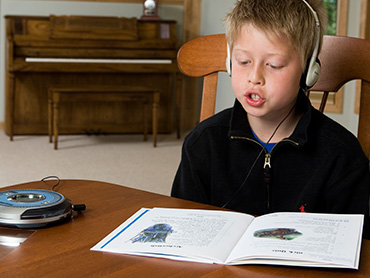One day, while our kids were coloring together, I overheard my brother-in-law ask his daughter if she needed more crowns. “Is she drawing a royal family?” I wondered. “Is she planning to play dress-up later?” Imagine my surprise when I realized my brother-in-law’s question had nothing to do with royalty, dress-up, or anything crown-related at all. He was simply checking on the status of her crayons.
 I knew there were different pronunciations for the word crayon. I say it with one syllable (cran) while my Texas-native neighbors growing up said it more like cray-awn. These differences seemed reasonable enough. But crown?
I knew there were different pronunciations for the word crayon. I say it with one syllable (cran) while my Texas-native neighbors growing up said it more like cray-awn. These differences seemed reasonable enough. But crown?
Turns out, a small percentage of people in the U.S., including my brother-in-law, consistently pronounce crayon this way. Who knew?
I sure didn’t. But maybe I shouldn’t have been so surprised. After all, as a Minnesota native who attended college in Boston, I raised more than a few eyebrows for the way I said words like “bag” (baayg). (But ask a Boston native where he parks (pahks) his car (cah), and the joke’s on him.) As we all know, words in the English language are pronounced differently depending on where you live—and sometimes these differences are drastic.
When Read Naturally first began, the audio recordings of our stories featured a lovely Minnesota accent that sounded straight out of the movie Fargo. As sales expanded, we received an increasing number of comments about the accent. While some children felt right at home, others felt almost like they were listening to a foreign language. Since that time, we’ve been able to update all of our audio to feature a professional voice talent whose dialect is more universally used.
Still, it was impossible to account for all the differences. When words like route, aunt, caramel, neither, and lawyer showed up in our stories, we had to decide which pronunciation to feature. Our editorial staff made each decision very carefully, taking into consideration the most widely accepted pronunciations in the United States.
Even so, some students might not agree with the sound of certain words. For example, to students in the Pacific Northwest, Read Naturally’s pronunciation of Sacagawea may sound completely incorrect. In these instances, we recommend that teachers accept both the local pronunciation of the word and the pronunciation featured on Read Naturally’s audio recording.
In addition, consider turning these pronunciation differences into mini-lessons on dialect. There are several websites dedicated to the various pronunciations of words. Here are some of our favorites:
A dialect map of American English
The list of questions used to create dialect maps
Talking with your students about pronunciation differences can turn a frustrating experience into a teachable moment. An added bonus is that learning about regional differences can be great fun. (Did you know about Mischief Night? Check out this map!) Best of all, taking the time to acknowledge these differences, however little they may be, communicates an important message about embracing our world in all its diversity—crayons, crowns, tomatoes, tomahtoes, and all the rest.
 Share your student’s success story—nominate him or her for our Star of the Month award. Win a Barnes & Noble gift card for the student and a Read Naturally gift certificate for your class!
Share your student’s success story—nominate him or her for our Star of the Month award. Win a Barnes & Noble gift card for the student and a Read Naturally gift certificate for your class!
Post a New Comment